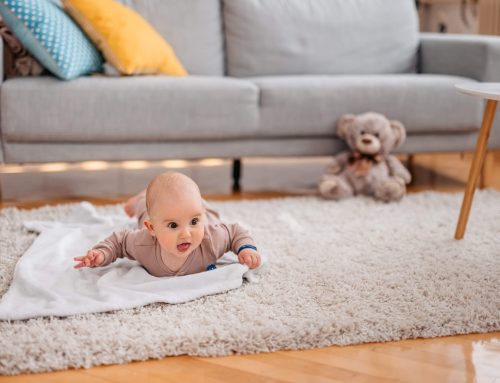
Your Trusted Source for Energy-Efficient Home Tips
Living in an energy-efficient home is all about cultivating a complete sense of comfort, reducing monthly expenses and reducing your carbon footprint. A few strategic changes around the house are all it takes to hit your energy efficiency goals. Think about the most common areas of energy waste in the average North American home and what’s available to fix them.
1. Lacking Enough Insulation
If your attic, walls and floors have too little insulation, you’re most likely wasting energy, not to mention money. Proper insulation keeps heat contained for winter and keeps hot summer air outside, so the HVAC system won’t need to run overtime.
- The fix: Boost insulation levels to your attic, the easiest place to retrofit an existing home. There are many types of insulation to choose from, like fiberglass batts, loose-fill cellulose and spray foam. Hiring a local professional is almost always worth it for the expert advice and quality work.
2. Run-Down Appliances
Outdated refrigerators, dishwashers and washing machines run less efficiently than newer models. Poor maintenance practices will sometimes make things even worse.
- The fix: Use energy-saving strategies when running appliances. This includes running full loads in the dishwasher, using cold settings for laundry and loading the dryer properly. In fact, you should consider line or air-drying when you can. As for the fridge and freezer, remove debris from the coils for optimal performance. And when it’s time to replace your appliances, look for ENERGY STAR®-rated models. They’re able to use less energy without losing out on total performance.
3. Dated Lighting
Old incandescent bulbs are notorious energy wasters. In fact, they tend to produce more heat than light, which isn’t just inefficient—it also puts more strain on your AC.
- The fix: Stick to using LED bulbs, which need much less power and have a much longer lifespan. Additionally, remember to shut off lights when you step out. And for good measure, unplug any electronic devices when they’re not in use. For greater savings, consider installing smart bulbs and plugs to manage devices wherever you need to.
4. Upgrade to Solar Energy
If you’re interested in going even greener, consider investing in solar power. Panels alone can light your home during the day while a connected battery bank saves power for nighttime use and on stormy days. While solar systems require an initial investment, tax credits and utility rebates are available to help offset the investment.
5. Water Heaters
Your old water heater is a major power drain, especially when it’s kept at excessive temperatures or is even oversized for your household’s needs. Water heaters also experience heat loss through uninsulated pipes, adding unnecessary costs to your utility bill.
- The fix: Learn about the benefits of investing in a tankless water heater, which heats as needed. If that isn’t cost-effective as an option, insulate the water heater tank and pipes, lower the thermostat to 120 degrees F and try not to neglect water heater maintenance.
6. Leaks in Your Windows and Doors
Leaks in your windows and doors lose lots of indoor heat in the winter and let in heat during the warmer months. In either of these situations, your HVAC system is put under strain.
- The fix: If replacing all the windows isn’t affordable, add caulk and weather stripping around doors and windows to try and minimize these air leaks. Once you’re prepared to invest in new windows, go for multi-pane, low-emissivity (low-E)-coated windows. These designs reduce unwanted heat transfer by creating an insulating air barrier between the inside and outside of your home.
7. A New HVAC System
Heating and cooling account for over half of the energy use in most homes. If your HVAC system is outdated, it may have to stay on longer and might struggle to maintain a comfortable indoor temperature. Systems larger than you need are also a concern, as they may start short cycling, leading to unstable temperatures, poor control over humidity levels and added strain on the system. Then, leaky ducts waste more energy, forcing your system to make up the losses to achieve your set temperature.
- The fix: Install a properly sized ENERGY STAR®-certified HVAC system and have the air ducts checked for leaks. After, set up preventive maintenance to keep the system in better working condition for years to come. Installing a programmable thermostat also helps. Adding one allows you to set temperatures more precisely based on your schedule, so you don’t waste energy on climate control when you’re not at home.

